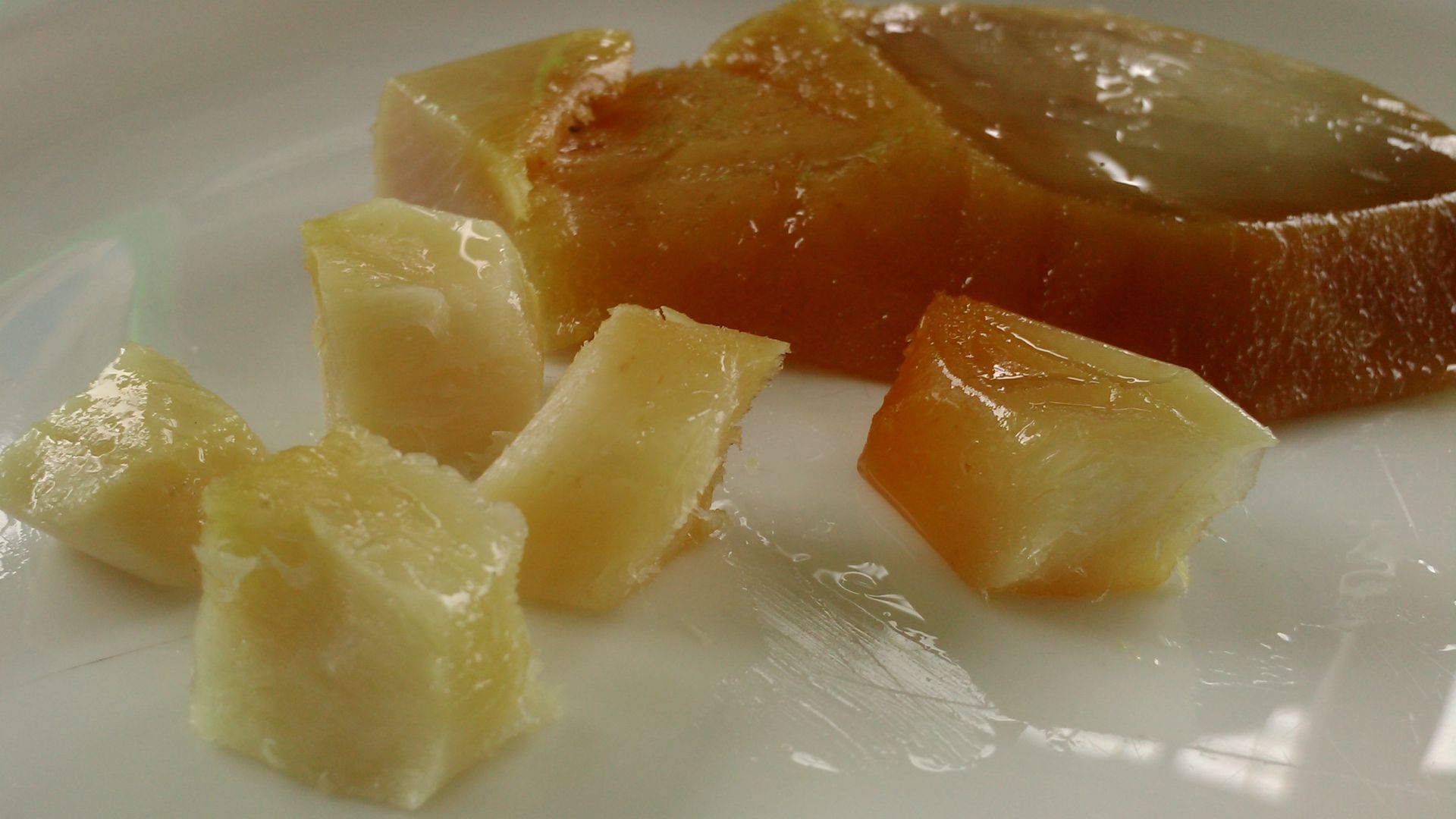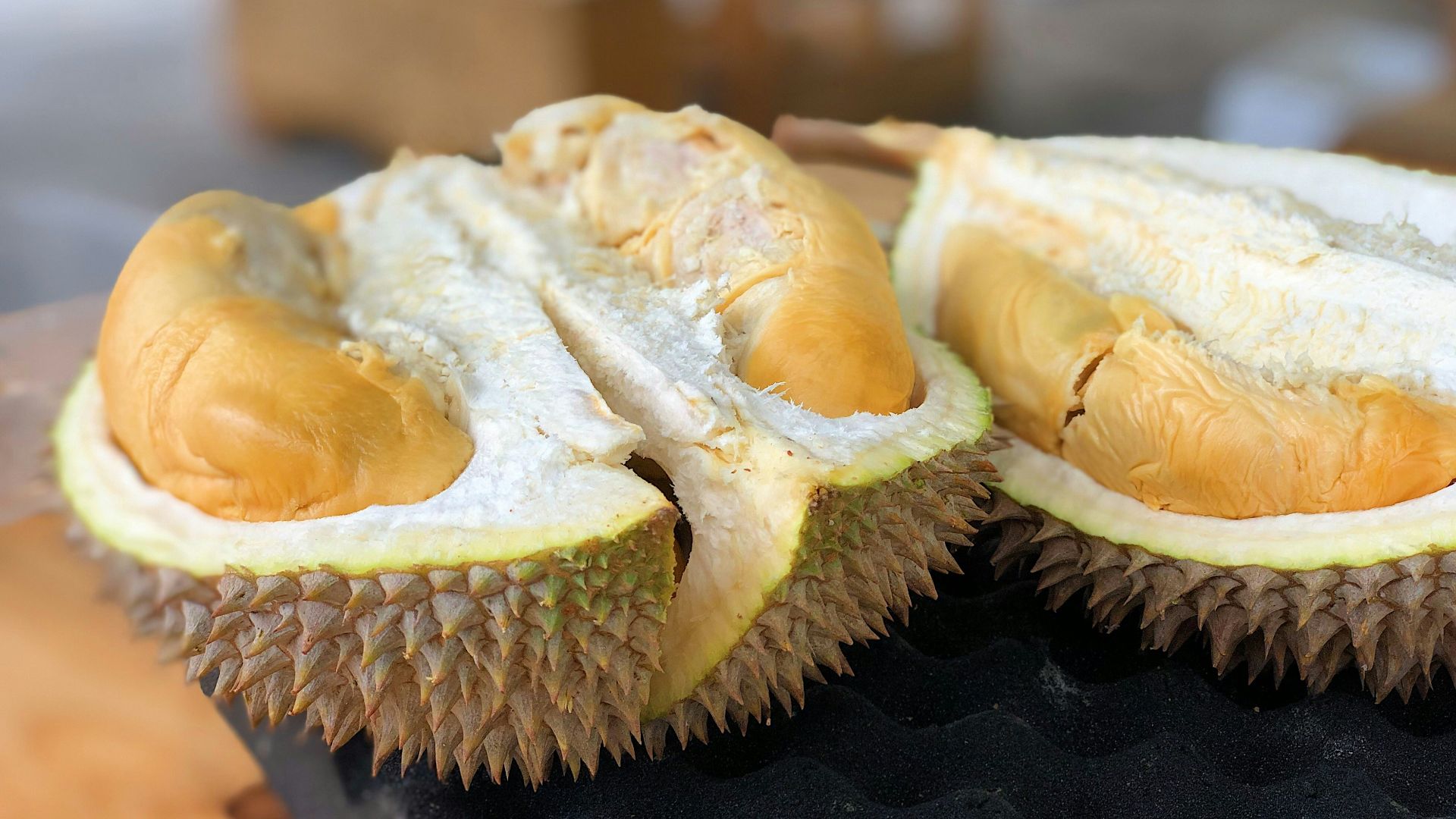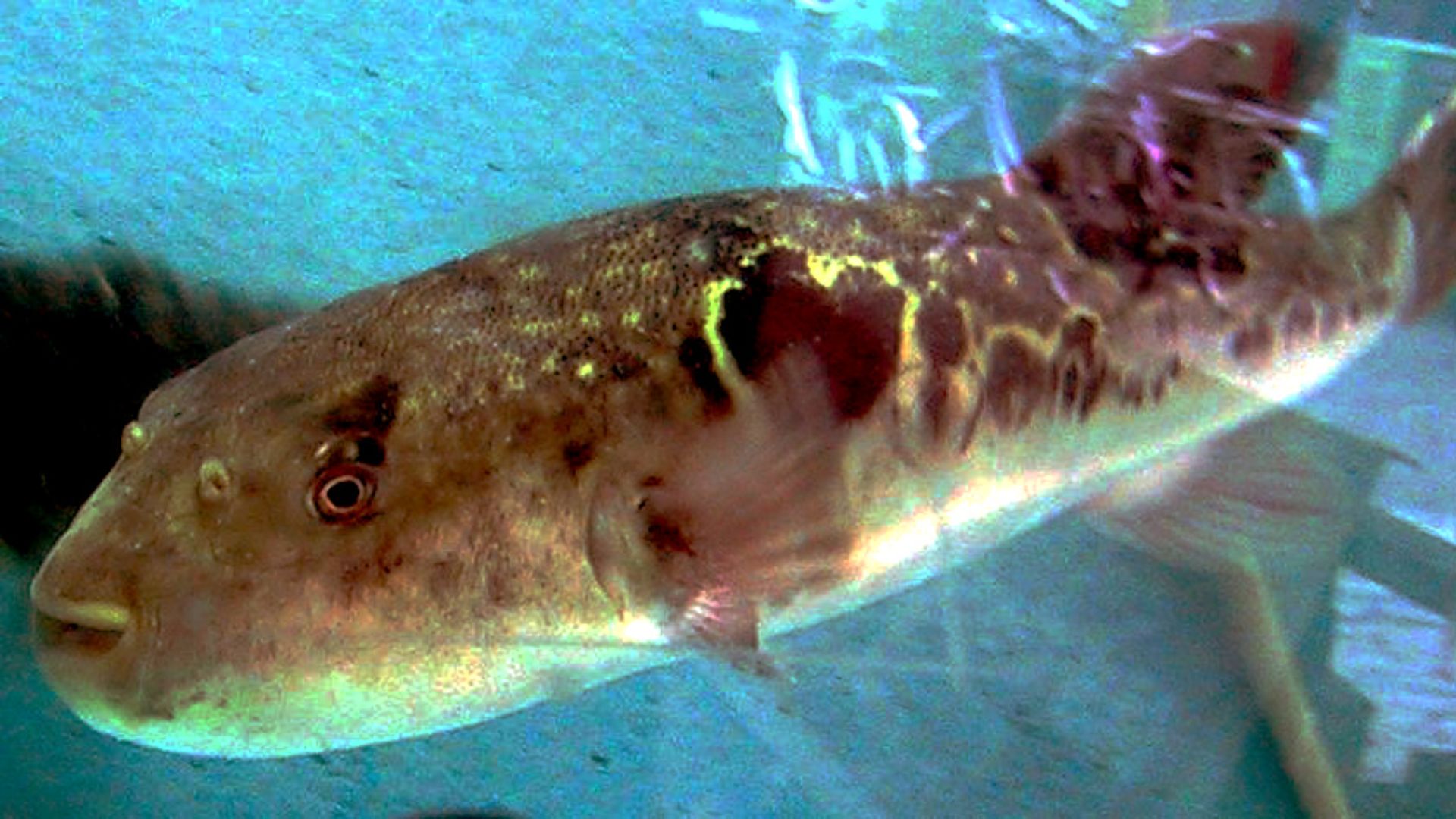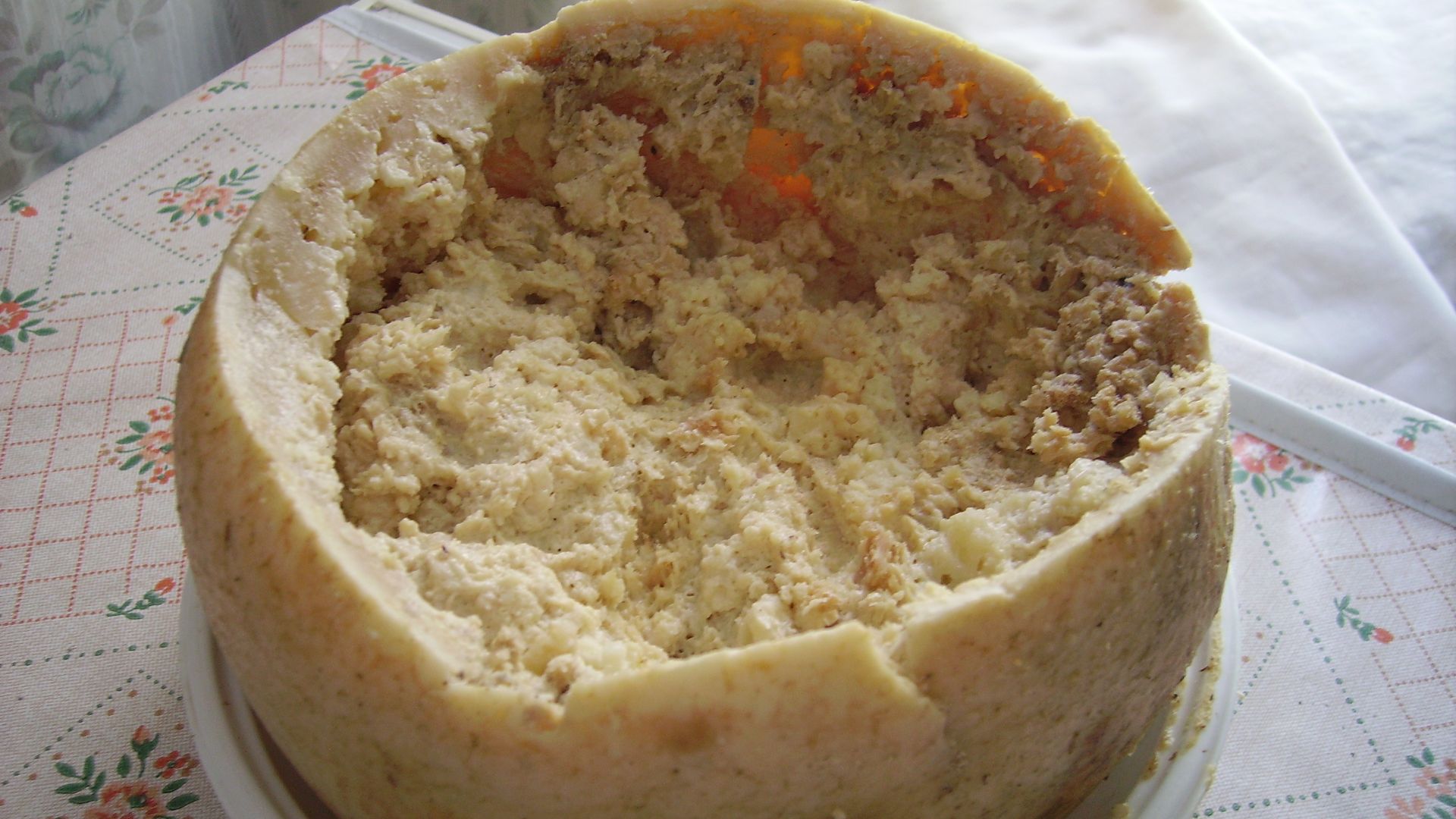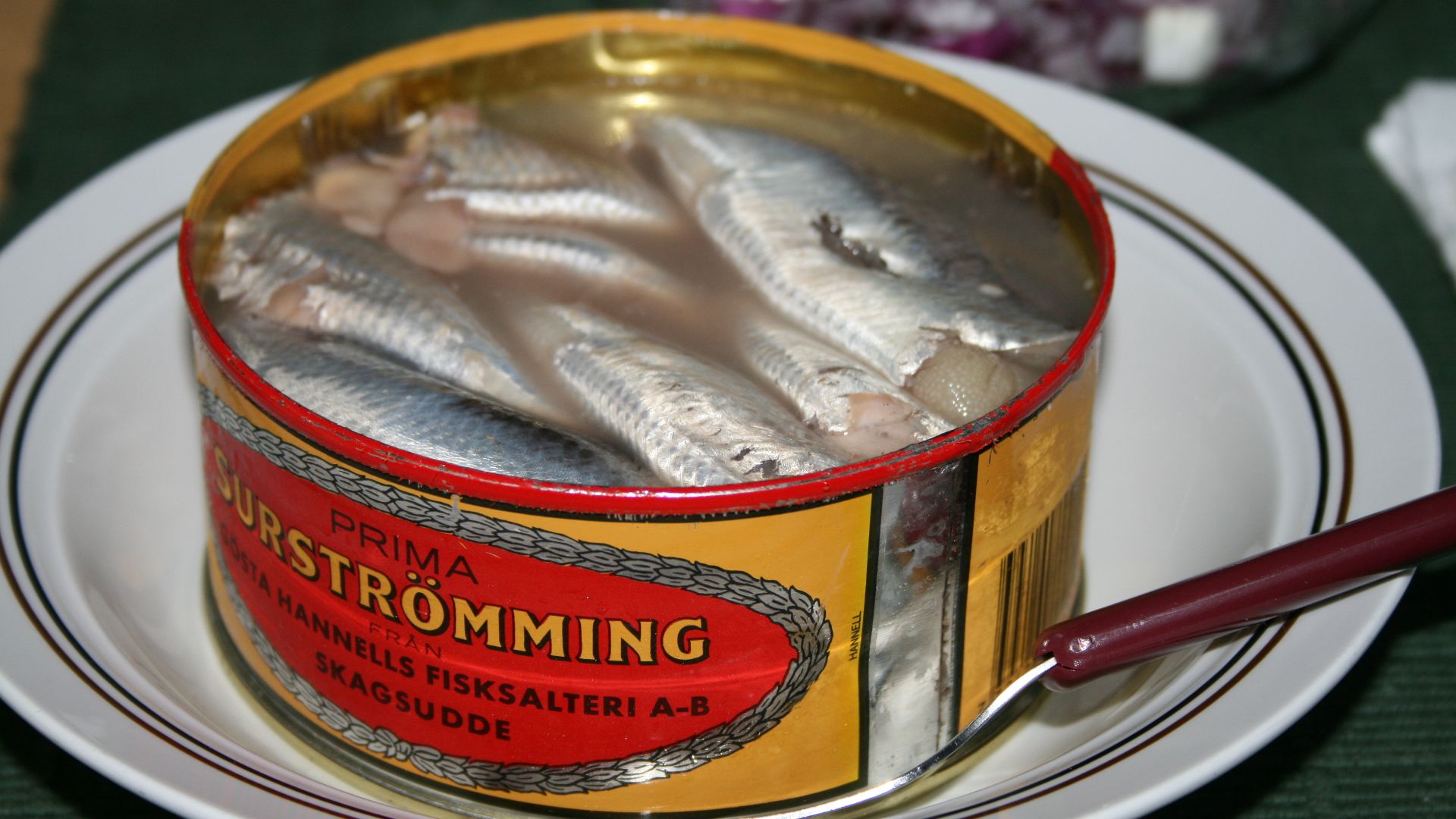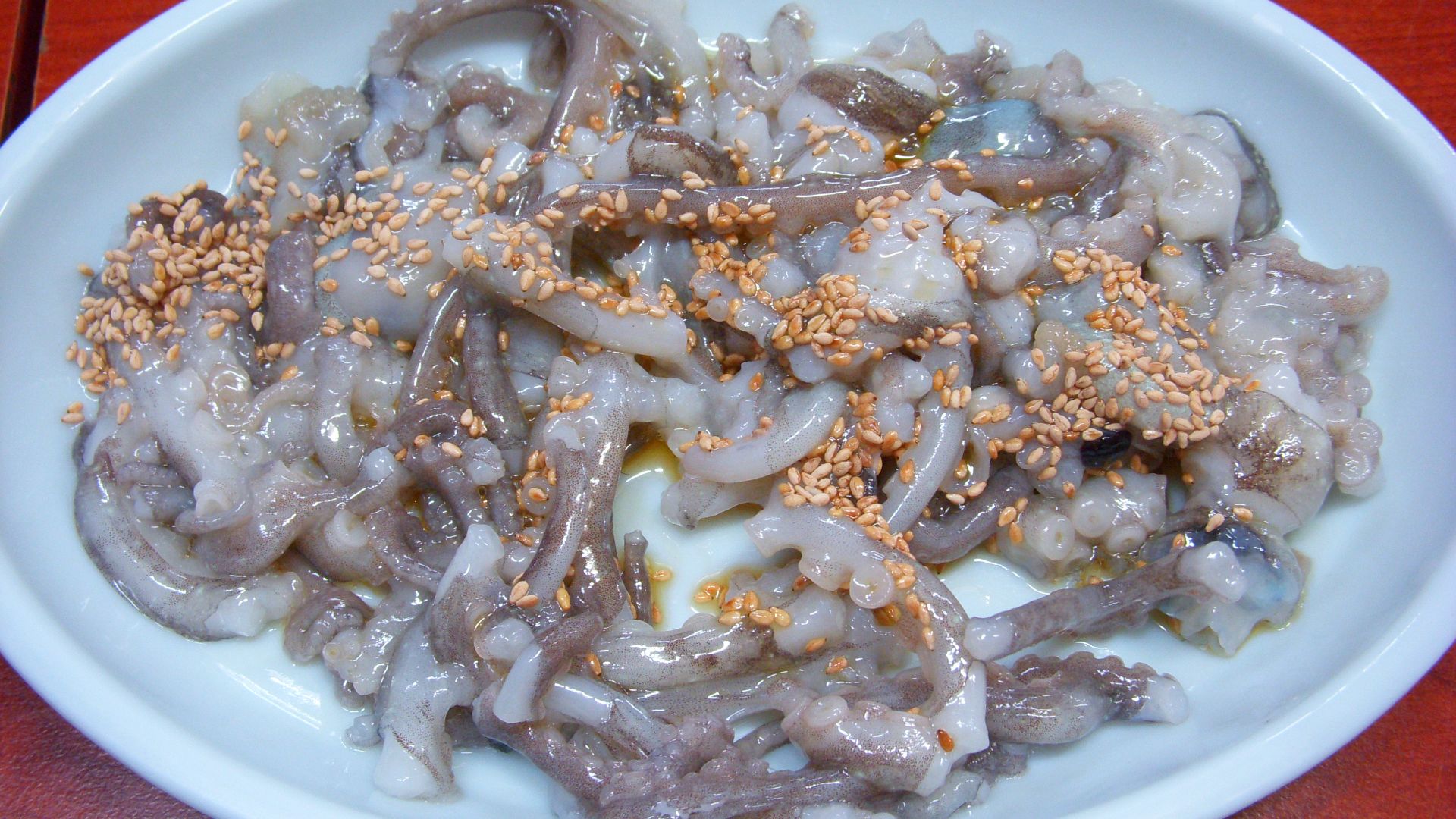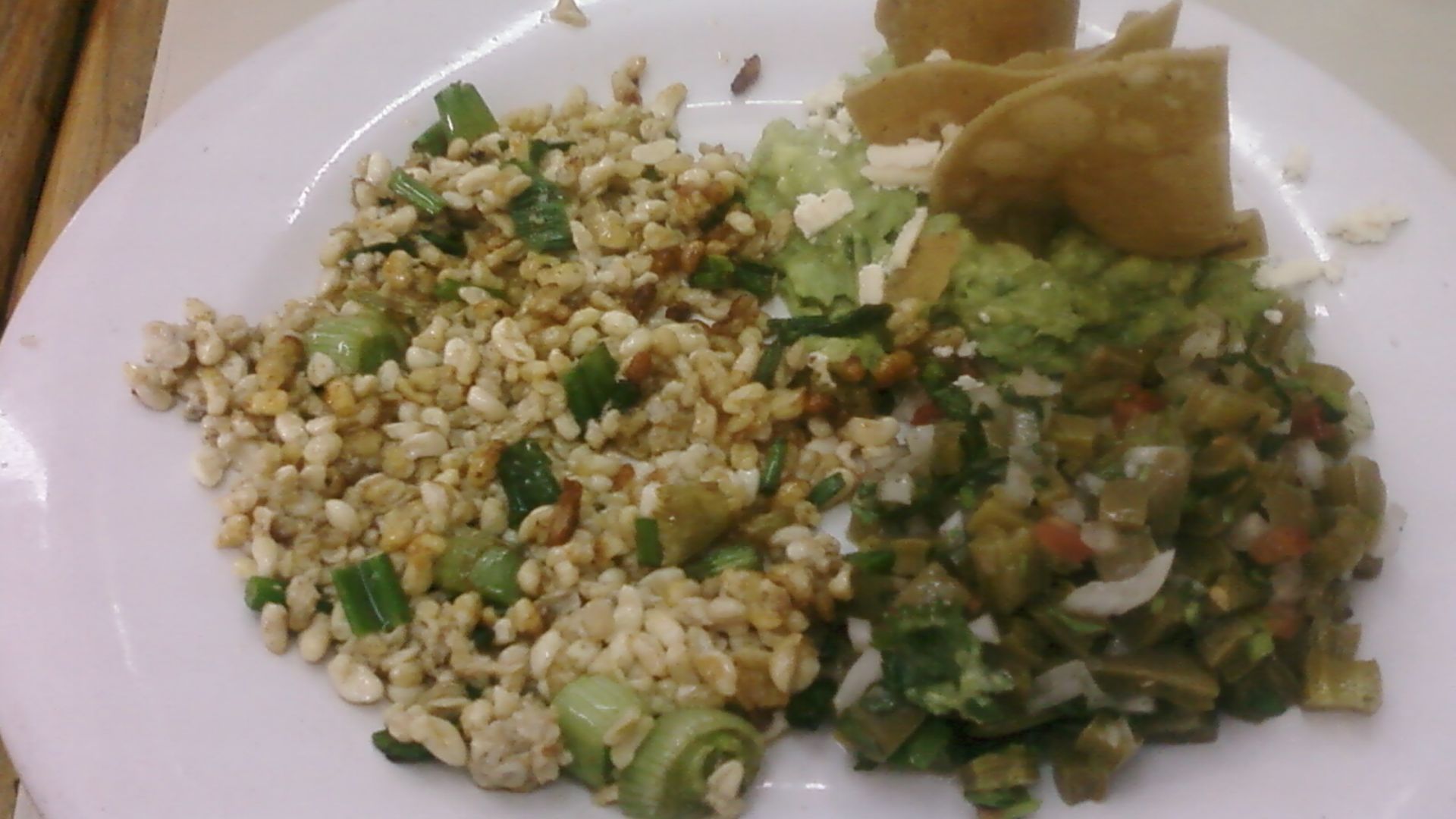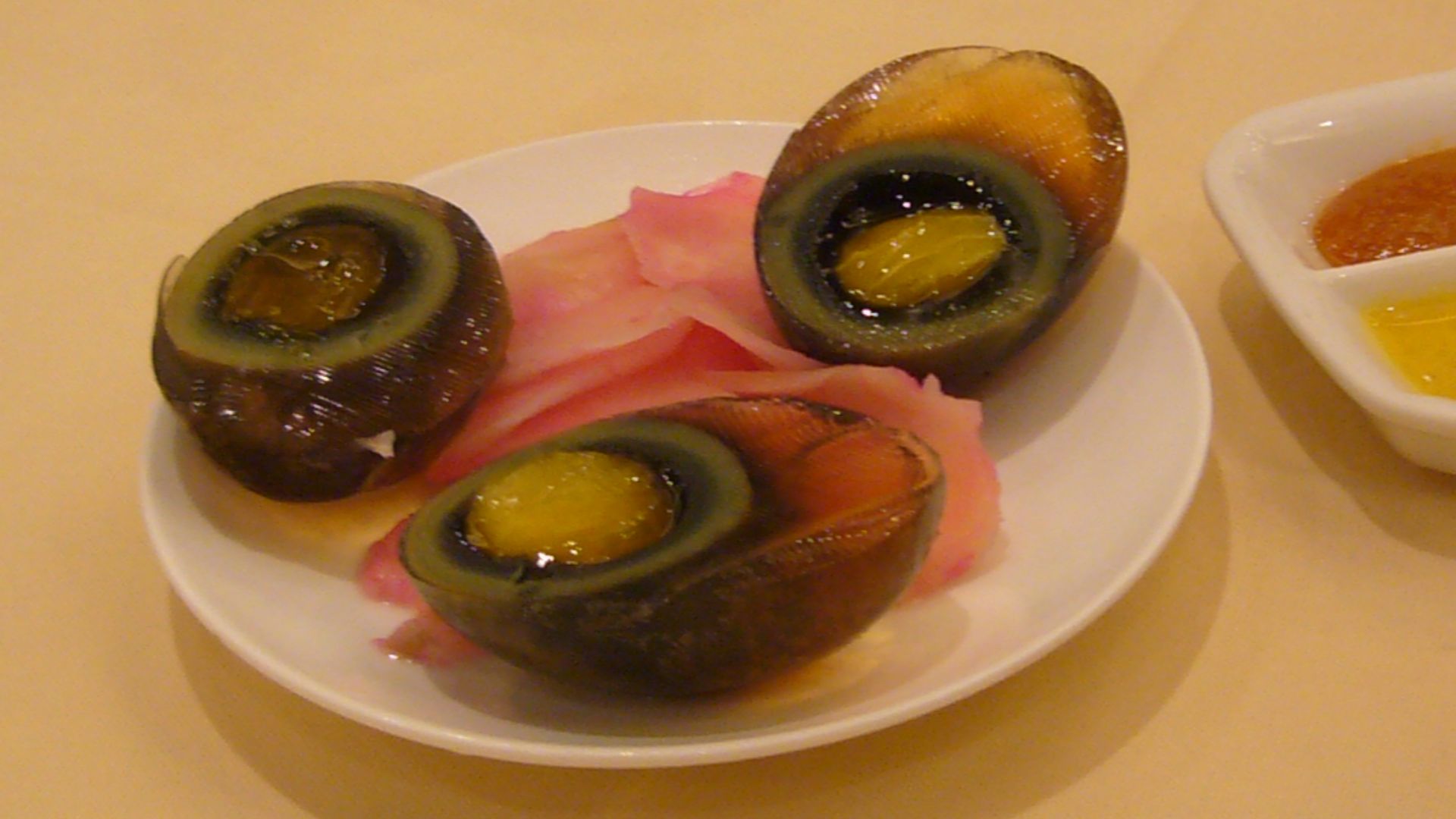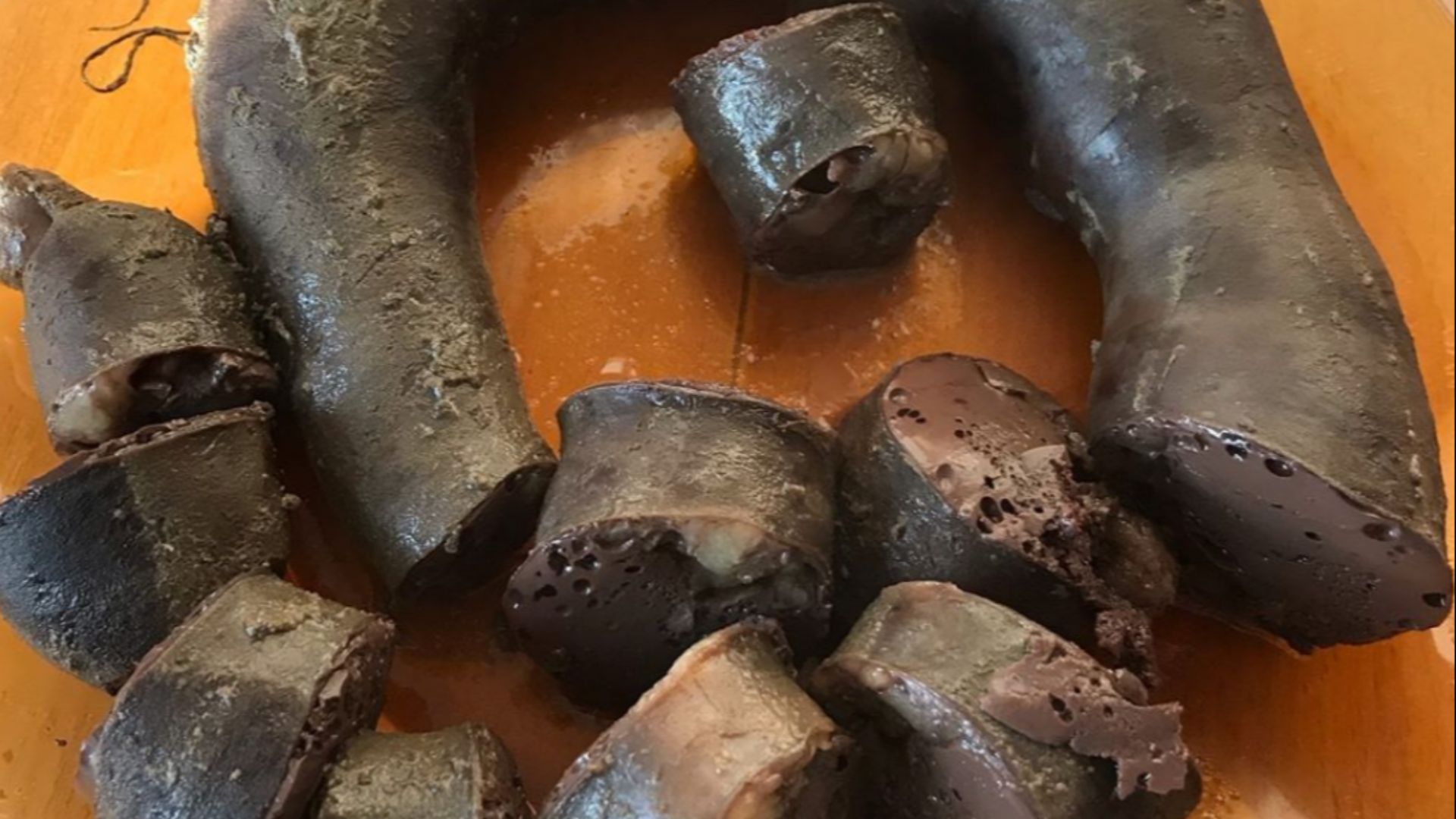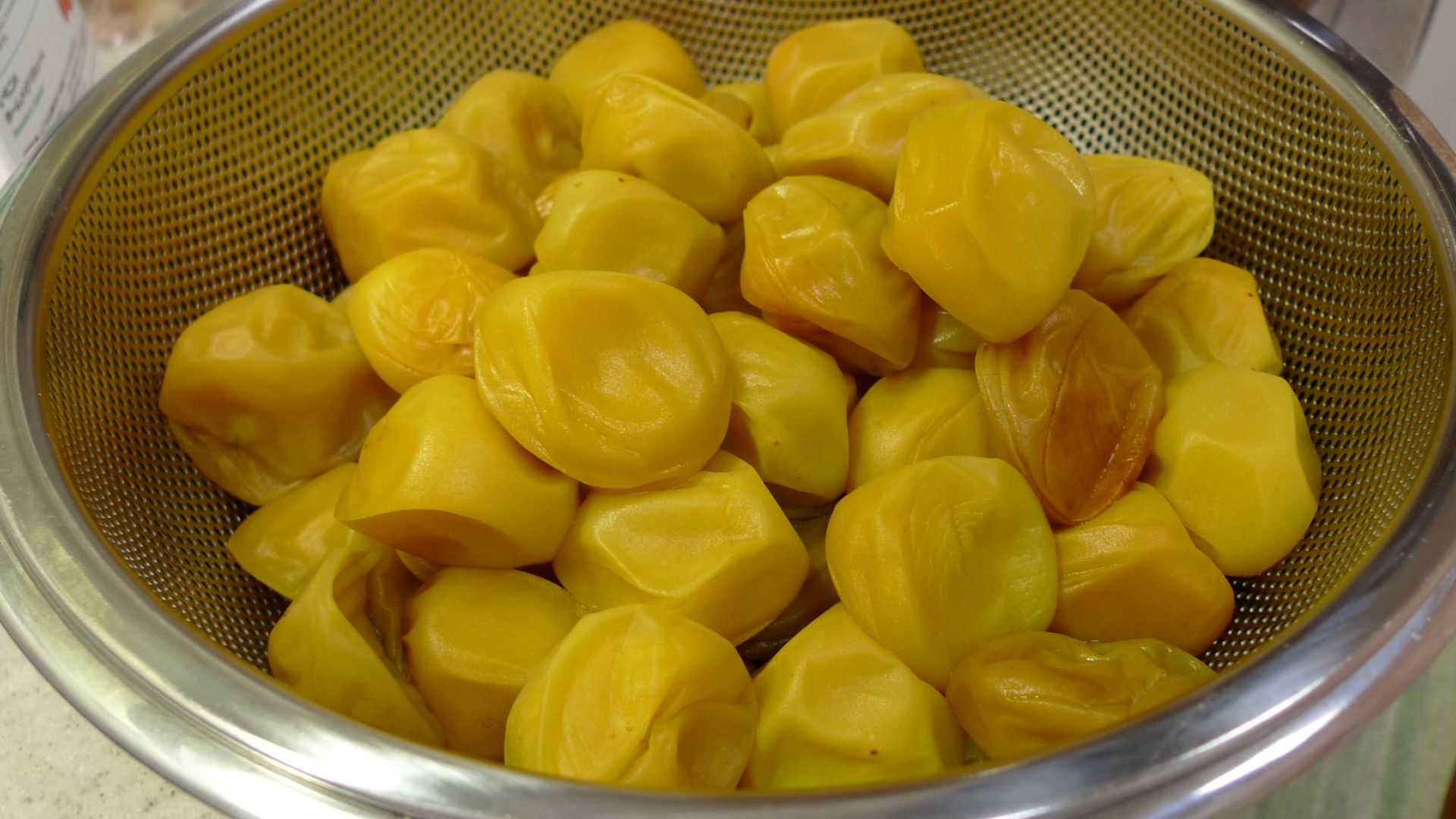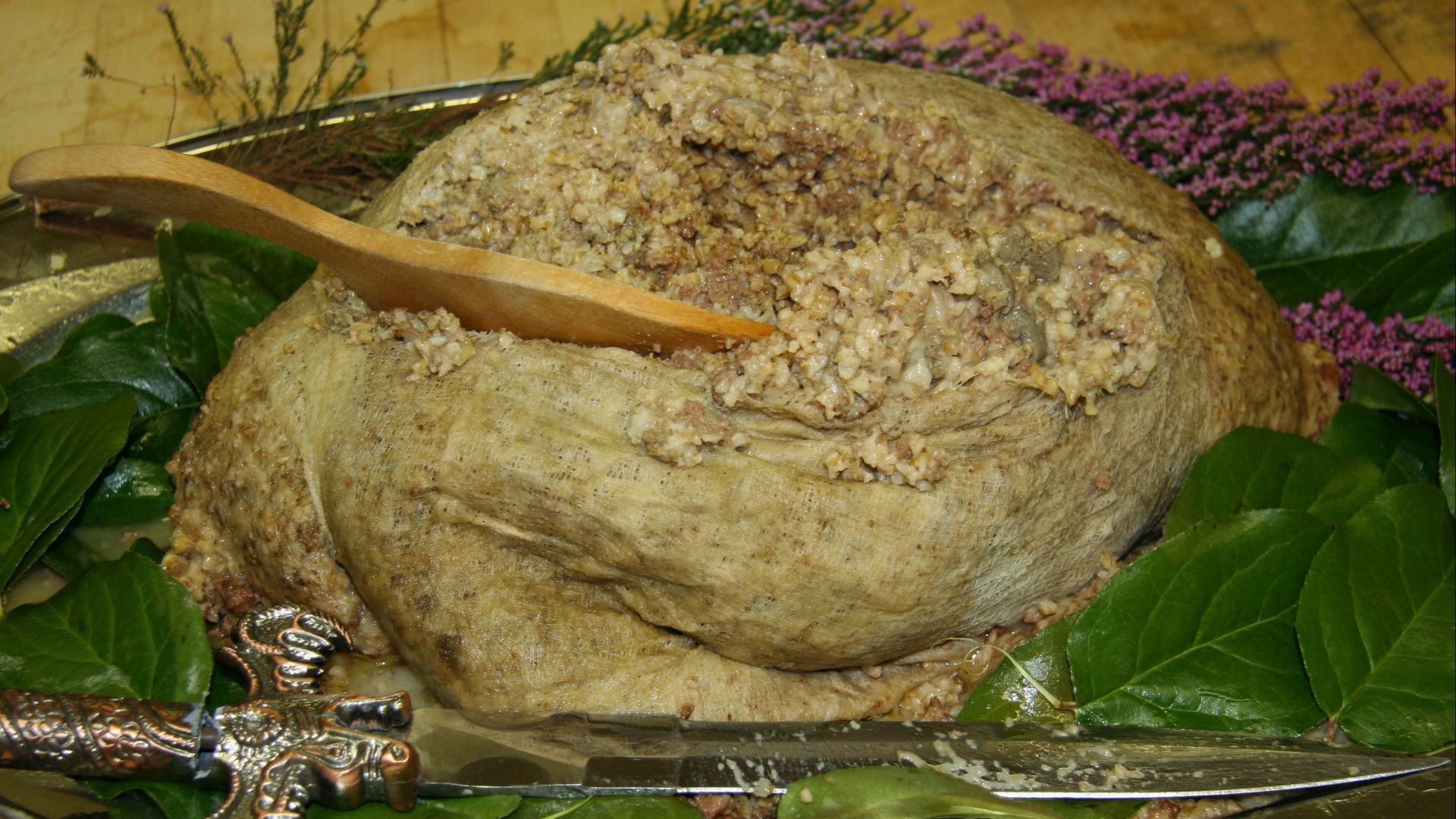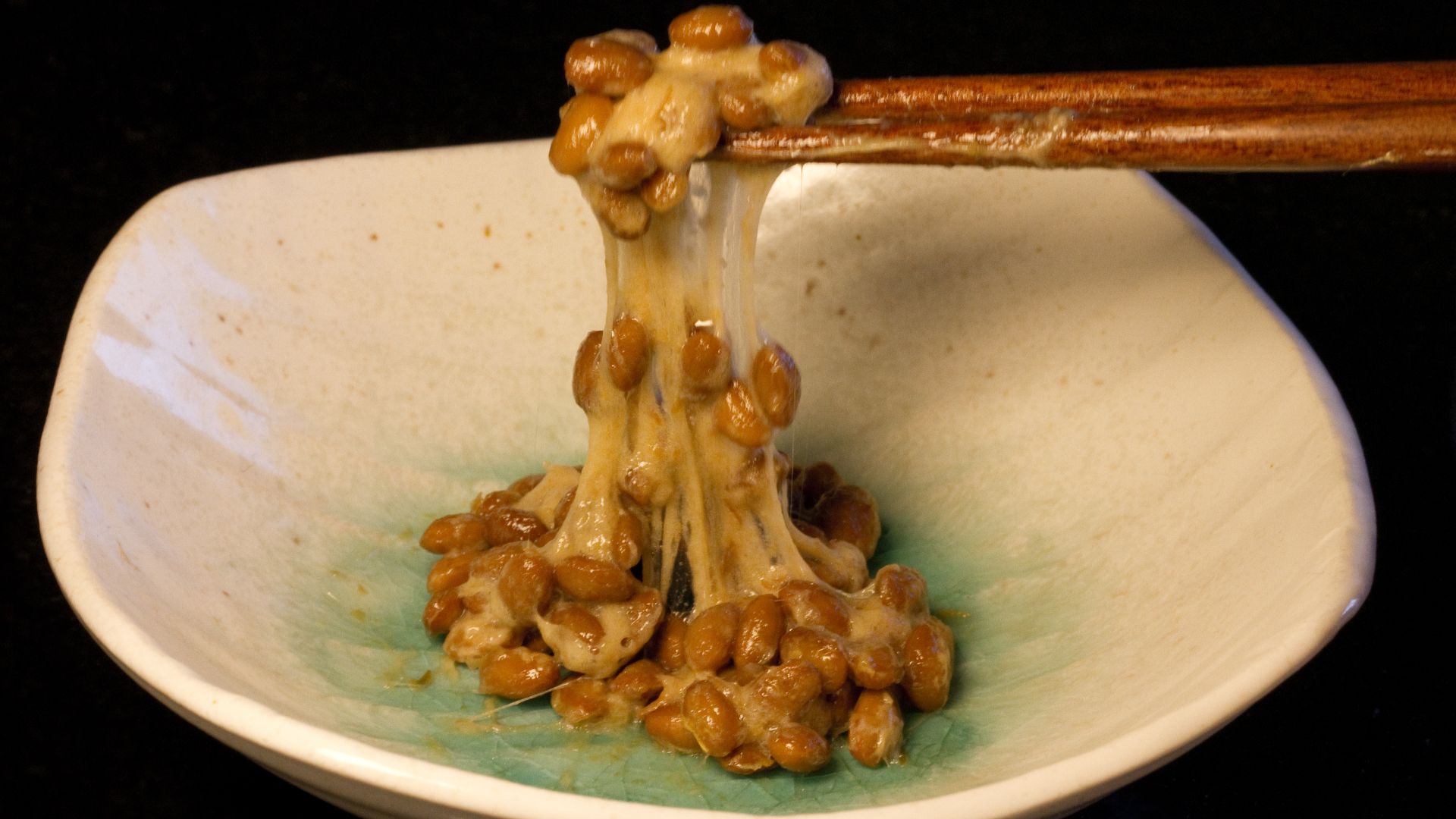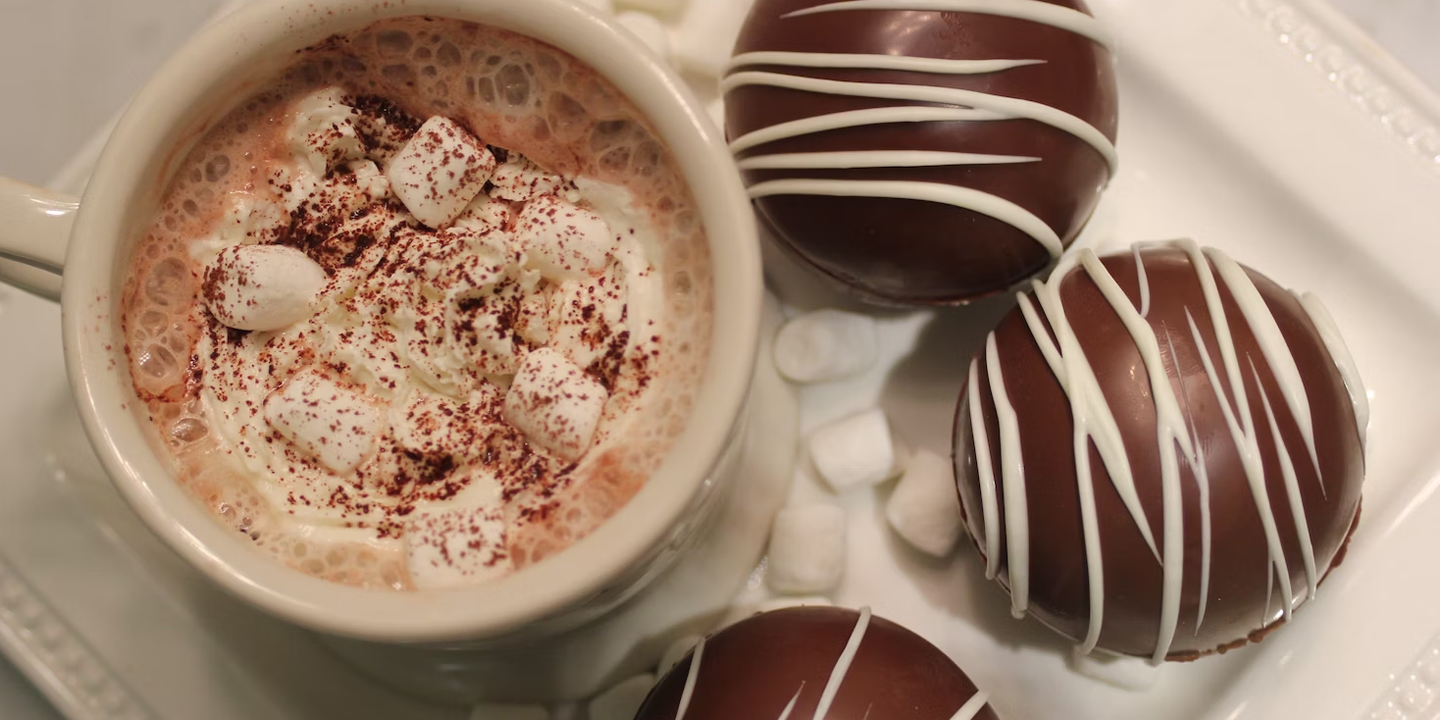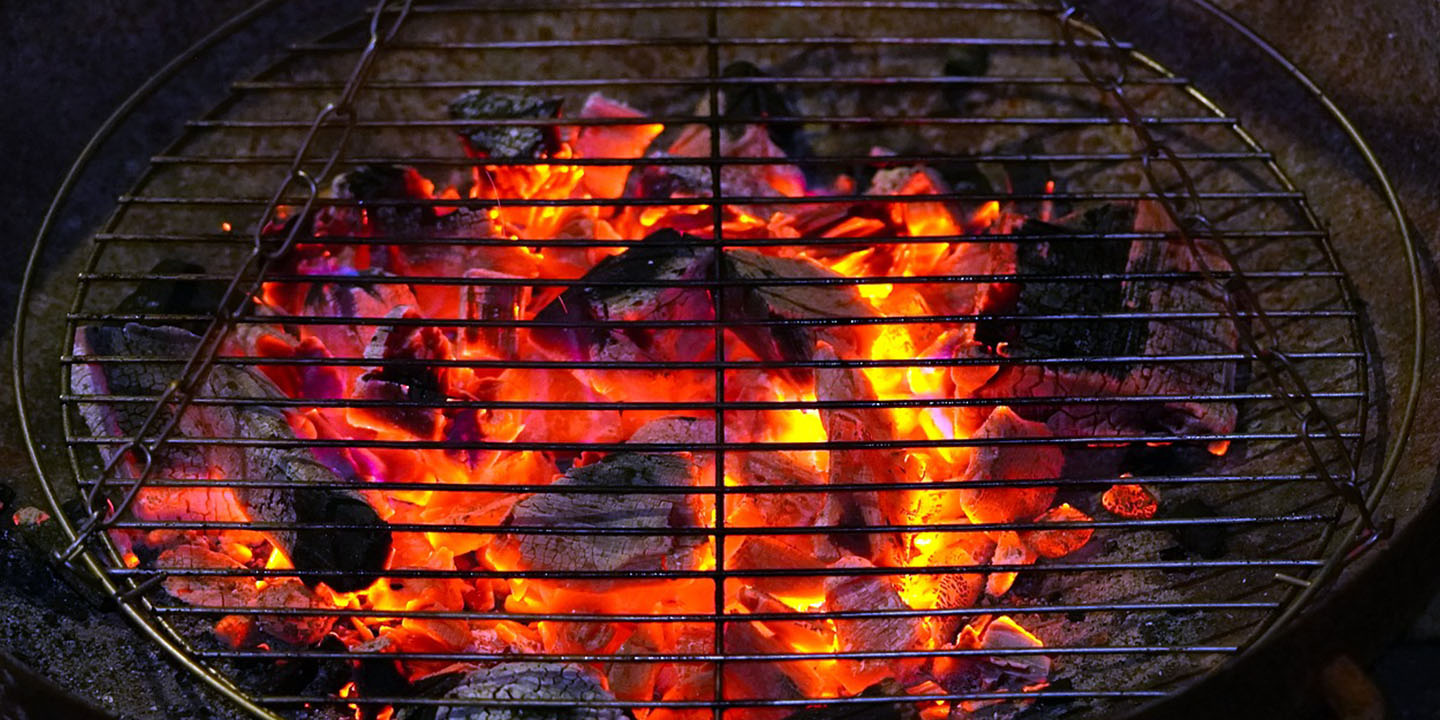How Refined Is Your Palate?
When you think of exotic foods, what comes to mind? Colorful plates with aromatic delicacies? However, some foreign dishes are just, well, a bit too foreign for most Americans. Most Americans (and people of different cultures in general) just can't seem to wrap their heads around these dishes. Still, they are beloved in their home countries regardless of what foreigners may think. So are you brave enough to try any of these 20 foods from around the world?
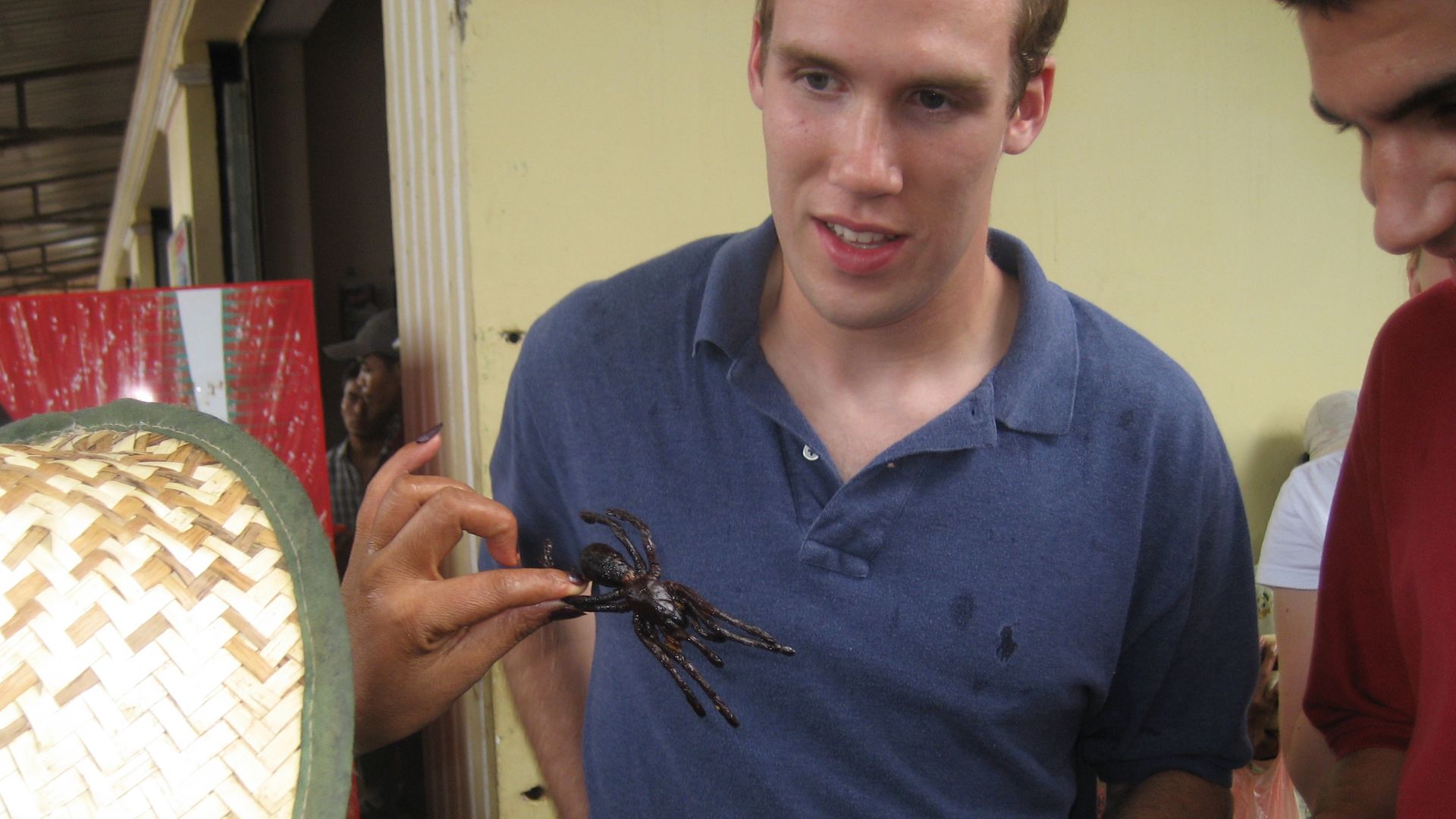 Greg Walters from Eaton, United States on Wikimedia
Greg Walters from Eaton, United States on Wikimedia
1. Hákarl (Iceland)
It’s a toxic fermented shark that smells so strongly of ammonia that many people find it unbearable and dangerous. The taste is just as bad, with some even calling it one of the worst things they've tried and dubbed it “rotten shark.” In Iceland, it's a delicacy. In the US, it's dreadful.
2. Durian (Southeast Asia)
Often called the "king of fruits," durian has a smell so overpowering that it’s banned in many hotels and public transport systems in Asia. Its custard-like flesh may taste sweet, but most Americans can’t get past the strong stench. Even Bobby Flay fears it!
3. Fugu (Japan)
Fugu, or pufferfish, is a deadly Japanese delicacy. This fish is naturally poisonous and needs to be prepared by licensed chefs who know how to avoid its toxic parts. The sane citizens just don’t think about consuming something potentially fatal.
4. Casu Marzu (Sardinia, Italy)
It’s tough to understand how Casu Marzu is considered a delicacy. The Sardinian cheese is made with maggots. What’s worse? They might still be alive! That’s enough to make normal people break into a cold sweat—no wonder this dangerous cheese is banned in many parts of the world.
5. Balut (Philippines)
Balut is an acquired taste that makes a regular stomach churn. This delicacy is a fertilized duck egg containing a partially formed embryo. Locals often eat it straight from the shell, which is a questionable choice for most Americans.
6. Surströmming (Sweden)
If you think fermented foods couldn’t get worse, surströmming will prove you wrong. It’s the smelliest food in the world—so foul that it’s banned on flights. Americans who have dared to try this fermented herring often report gagging or vomiting from the stink alone.
7. Sannakji (South Korea)
Sannakji means this: live, long-armed octopus sliced and immediately served, sometimes with sesame oil and seeds. Would you eat those tentacles that are still wriggling on your plate? Sannakji can beat even the bravest eaters from the States.
8. Escamoles (Mexico)
Have you ever heard of "ant caviar?" It means escamoles in Mexico, and they almost look like risotto. But they are ant larvae served in a variety of dishes. Eating ants is already bizarre, so no, “the delicate, nutty flavor” doesn’t change the fact that you’re munching on insect larvae.
9. Mopane Worms (Southern Africa)
Mopane worms are caterpillars that live in Mopane trees. Dried and fried mopane worms are a staple snack in Southern Africa. They have quite a crunchy, protein-packed reputation out there. However, many North Americans agree that eating caterpillars gives them the creeps.
10. Tarantula (Cambodia)
Fried tarantulas are sold as street food in Cambodia, but the thought of biting into a spider is terrifying for many. Arachnophobia (irrational fear of spiders) makes it all the more horrific. It’s one of the most common phobias in the US.
11. Century Egg (China)
Century eggs are preserved eggs that turn a dark, sometimes greenish color. You need to preserve them for at least 20 days using ingredients like salt, clay, and wood ash. They smell and look so odd that Americans gladly turn to the precious Eggs Benedict.
12. Kiviak (Greenland)
Kiviak is a traditional Greenlandic dish made by fermenting auks (small seabirds) inside a seal skin. Preserving dead birds inside a seal’s carcass for months is just scary and one of the world’s most terrifying meals. It’s not something you’d find on a menu in the US.
13. Sheep’s Head (Iceland and Norway)
It’s a whole boiled sheep’s head! They even serve it with the sheep’s eyes and brain still intact. Guess what? It’s a delicacy in Iceland. Regardless, many Americans have been seen running for the hills. The big head staring back at you is a terrible presentation.
 Sheep's Head - The Icelandic Cuisine by Culture Trip
Sheep's Head - The Icelandic Cuisine by Culture Trip
14. Black Pudding or Blood Sausage (UK)
A pitch-black sausage stuffed with cooked pork blood, fat, and oatmeal that sends American tourists fleeing from British breakfasts. People usually gag, looking at the preparations, repulsed by the blood and the dark casing. It’s far away from any American pudding!
15. Anchovies (Mediterranian Food)
These tiny, salty fish are often served whole, complete with bones and heads. While they're beloved in many Mediterranean cuisines, US citizens often find their intense fishy taste and appearance overwhelming. It’s even worse when those eyes stare up from a pizza or salad.
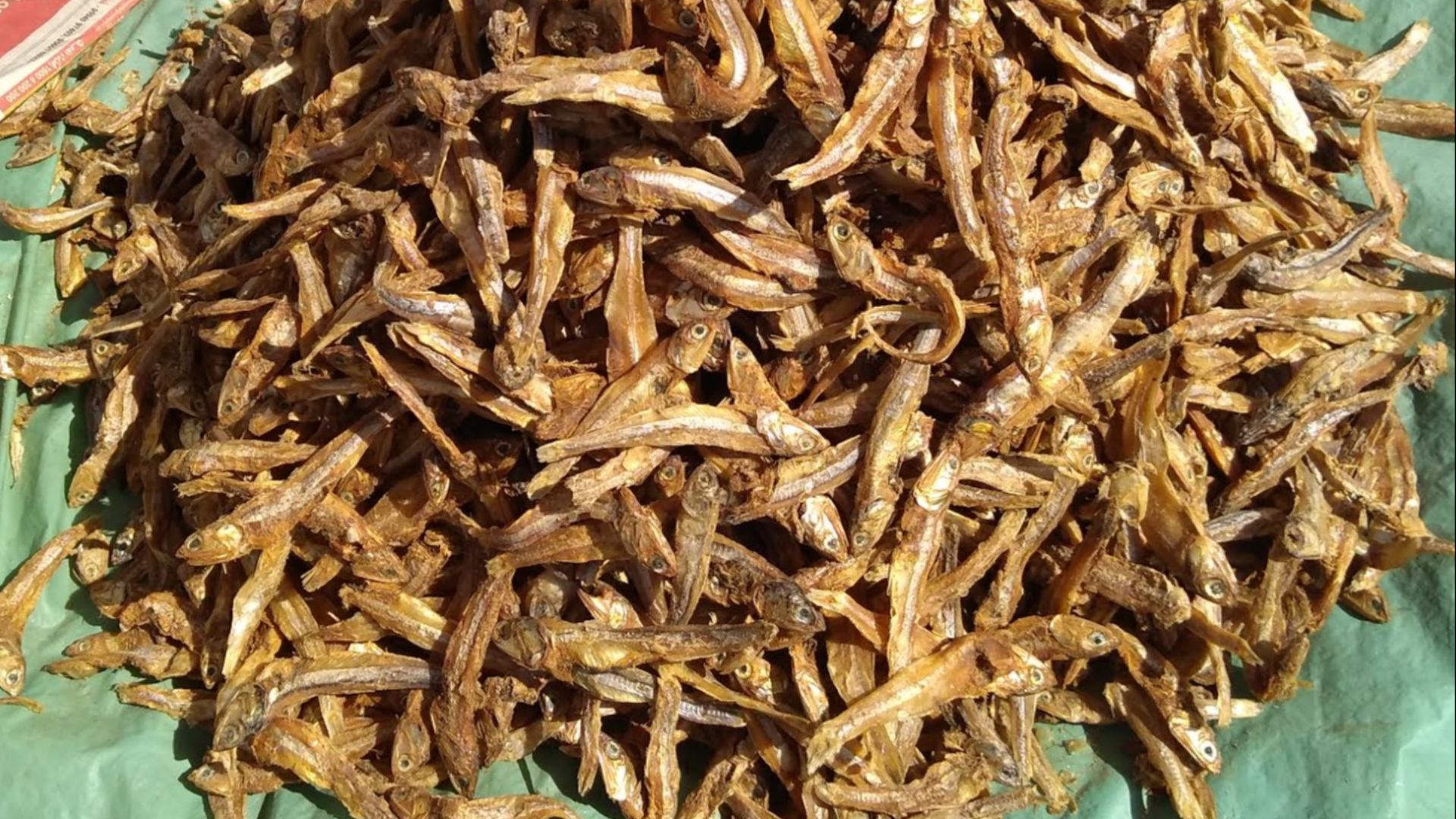 Thamizhpparithi Maari on Wikimedia
Thamizhpparithi Maari on Wikimedia
16. Jellied Eels (United Kingdom)
This traditional British dish has a gelatinous texture that can make many people gag. Served cold and in a jelly-like form, it’s difficult for diners to get past the strange flavor. Americans are more likely to skip it at many restaurants.
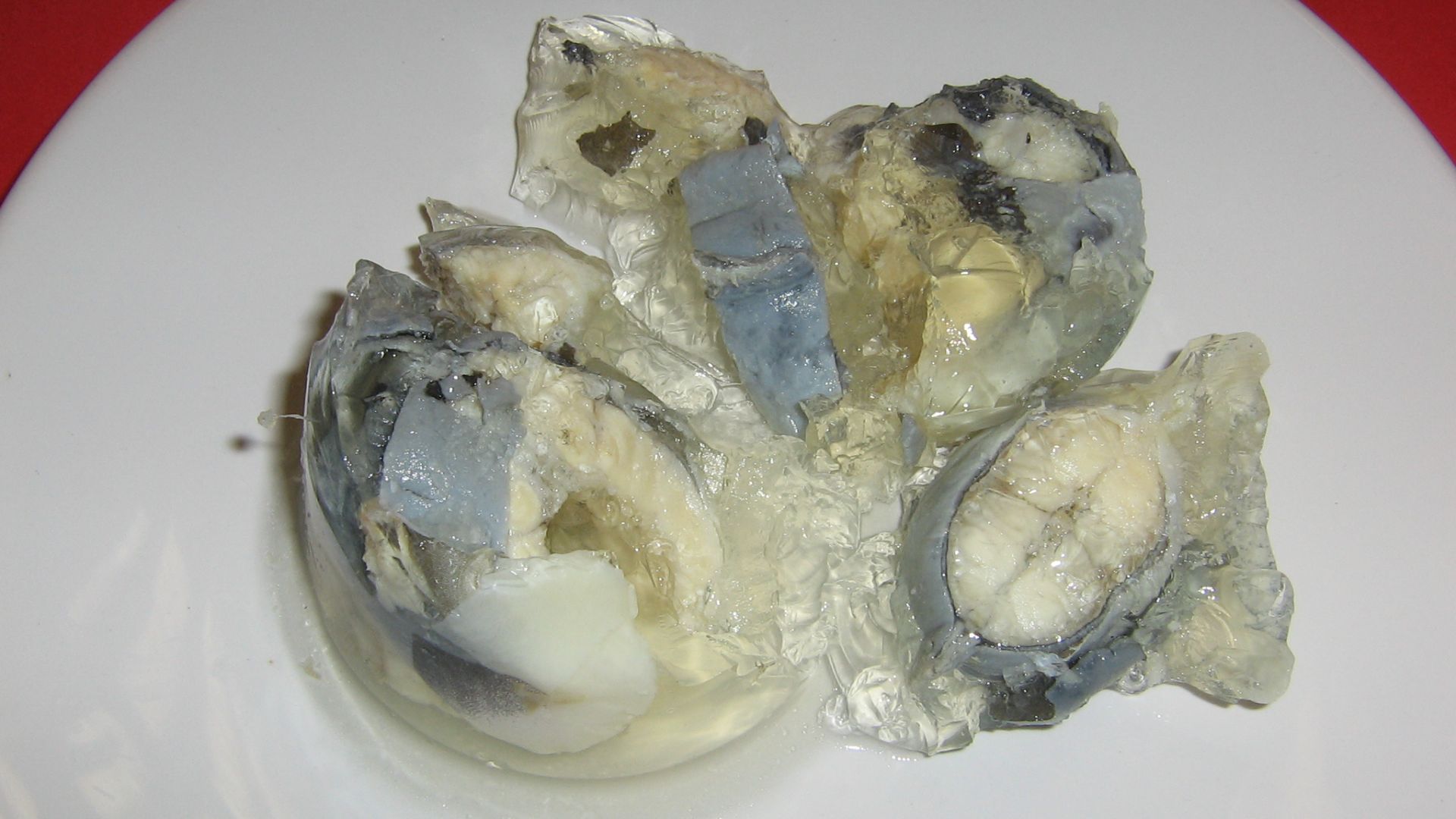 JanesDaddy (Ensglish User) on Wikimedia
JanesDaddy (Ensglish User) on Wikimedia
17. Umeboshi or Pickled Plums (Japan)
Umeboshi plums are intensely sour and salty, packing a punch that many Americans can’t handle. While they’re cherished in Japan, the potent flavor is so overwhelming that most people’s taste buds just aren’t up for the shock.
18. Haggis (Scotland)
This is a sheep's heart, liver, and lungs minced with oats and spices, then stuffed and boiled inside a sheep's stomach. This dish has even been banned in the US since 1971 due to lung ingredients, and for travelers, the mere description makes Americans recoil.
19. Chicken Feet (China)
It’s a Chinese dim sum staple that puts off many American diners with its unmistakable foot shape—complete with claws and knuckles. The gelatinous skin and tiny bones send even some food bloggers pushing away their carts after looking or (bravely) taking a bite.
20. Nattō (Japan)
Nattōs are fermented soybeans that develop sticky, slimy strings when stirred and emit a pungent smell that many Westerners can't stomach. Widely available in Asian markets across the US, it's been known for making American tasters recoil at its spider web-like texture and overwhelming fermented stench.
KEEP ON READING

20 Food-Related Art Projects



